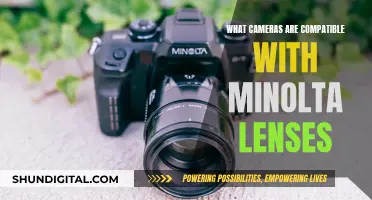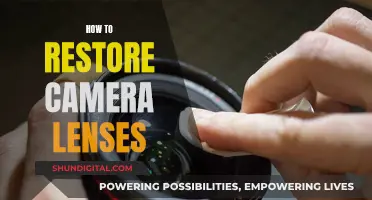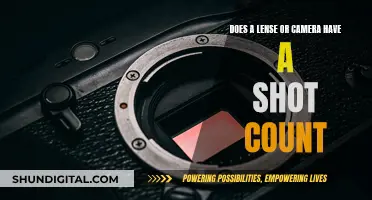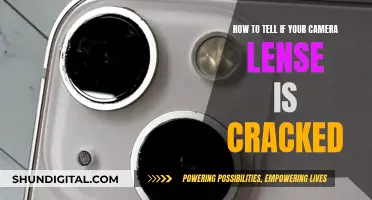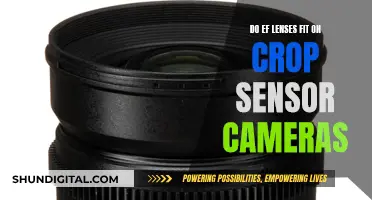
Keeping your camera equipment in an environment with 43% humidity is not too low and should be fine. In fact, the ideal relative humidity (RH) for camera equipment is between 40% and 50% RH.
High humidity levels (65-70% or higher) can damage your lenses and certain parts of your camera body through oxidation or fungal growth. Fungus thrives in dark, humid places with little airflow, and high humidity also accelerates the degradation of rubber parts on a camera body.
However, ultra-low humidity levels are also not ideal. Maintaining 30% RH or lower could dry up the lubricant oil in your camera, causing certain parts to wear out sooner and require frequent repairs. Low humidity can also cause rubber parts to crack, a condition known as dry rot.
Therefore, it is best to keep your camera equipment stored in an environment with a relative humidity between 40% and 50% to prevent any issues.
| Characteristics | Values |
|---|---|
| Ideal humidity level for camera and lenses | Between 40% and 50% RH |
| High humidity levels that can damage lenses and camera body | 65-70% or higher |
| Relative humidity levels that are too low for camera equipment in the short term | Around 25% |
| Relative humidity levels that are too low for camera equipment in the long term | Below 30% |
What You'll Learn
- The ideal humidity range to store camera equipment is between 40% and 50% RH
- High humidity accelerates the degradation of rubber parts on a camera body
- Low humidity can lead to static electricity, which can be bad for electronics
- Camera sleeves and lens hoods can protect your camera from humidity
- Silica gel packs are an effective way to keep your camera gear dry

The ideal humidity range to store camera equipment is between 40% and 50% RH
To maintain the ideal humidity range for your camera equipment, you can use a camera dry box or cabinet. These are enclosed spaces that allow you to control the humidity levels inside, usually electronically. By setting the desired humidity level, the dry box will help keep your camera equipment safe from the damaging effects of both high and low humidity. It's recommended to keep the relative humidity inside the dry box between 40% and 50% RH. This will ensure that your camera lenses and other parts remain free of fungus and other moisture-related issues.
In addition to using a dry box, there are several other measures you can take to protect your camera equipment from humidity-related damage:
- Keep your camera gear clean and dry at all times. Wipe down your equipment with a dry cloth to remove any dirt, dust, or moisture.
- Use silica gel packs in your camera bag or storage container. Silica gel is a desiccant that absorbs moisture from the air, helping to keep the relative humidity around your camera equipment low.
- Avoid changing lenses frequently, especially when moving between environments with significant temperature or humidity differences. This will help prevent condensation from forming inside your camera.
- Allow your camera to adjust to changes in temperature gradually. When moving between hot and cold environments, give your camera time to acclimate to the new temperature before using it.
- Use a lens hood and camera sleeve to protect your lens from condensation, temperature changes, and external elements like rain and dust.
- Consider using a dehumidifier cabinet or dry box to store all your photography gear. This will help maintain a consistent humidity level for all your equipment and protect them from moisture, dust, and fungus.
By following these tips and maintaining the ideal humidity range of 40-50% RH, you can effectively protect your camera equipment from the damaging effects of high and low humidity.
Camera Lenses in China: Cheaper or Expensive?
You may want to see also

High humidity accelerates the degradation of rubber parts on a camera body
High humidity can cause a lot of problems for camera equipment. While humidity itself does not directly harm photography equipment, it can cause lens fogging and fungal growth.
Lens fungus grows between lens elements and beneath the non-reflective coating of the lens element. It is difficult to remove once it has started to grow and will leave your images soft and washed out.
High humidity also accelerates the degradation of rubber parts on a camera body. This is because rubber is affected by low humidity and can start to crack if it is not used often. This is called dry rot.
To prevent lens fungus and degradation of rubber parts, it is recommended to maintain a low-humidity storage area for your camera and lenses. The ideal humidity level for camera and lens storage is between 40% and 50% RH. If the humidity in your environment is higher than this, you may need to use a camera dry box to reduce the humidity. You can also use airtight containers with silica gel or another desiccant to keep the relative humidity between 40% and 50% RH.
In addition to maintaining the proper humidity levels, it is important to keep your camera equipment clean and dry. Wipe down your camera and lenses before putting them away and expose them to sunlight or UV light on a regular basis.
Cleaning Camera and Binocular Lenses: A Step-by-Step Guide
You may want to see also

Low humidity can lead to static electricity, which can be bad for electronics
Firstly, low humidity can cause issues with static electricity, which can be detrimental to electronics. However, this is usually only an issue if you are handling the internal circuitry of your camera or lens, which is not recommended without an anti-static wrist strap. Modern cameras are designed to cope with static electricity, so it is unlikely to be a problem unless you are disassembling your equipment in dry air.
Secondly, very low humidity can cause certain parts of cameras and lenses to deteriorate. For example, rubber components can become brittle and crack, a process known as dry rot. This can be avoided by using your camera and lenses regularly, as frequent use prevents this type of damage.
Thirdly, maintaining relative humidity at 30% or lower for extended periods can cause mechanical issues. This is because ultra-low humidity can dry up the lubricant oil that lubricates the many moving parts in your camera and lenses, such as gears and rollers. This will cause these parts to wear out more quickly and may require frequent repairs.
Finally, low humidity can make it easier for dust to cling to your camera and lenses. This is not a direct consequence of low humidity, but rather the result of the increased static electricity that can build up in dry conditions.
To avoid the negative effects of low humidity, it is recommended to maintain a relative humidity of between 40% and 50% for camera and lens storage. This can be achieved through the use of a dry cabinet, airtight containers with silica gel, or full-room dehumidifiers. It is also important to use your camera equipment regularly and expose it to sunlight, as this will prevent lens fungus growth and reduce the risk of damage from static electricity.
Defog Your Camera Lens: Quick and Easy Tricks
You may want to see also

Camera sleeves and lens hoods can protect your camera from humidity
Camera sleeves
Camera sleeves are a great way to protect your camera from the elements, including humidity. They are often made from waterproof materials and can be purchased cheaply online. Some camera sleeves are even designed to be used while taking photos, meaning you can keep your camera protected at all times.
Lens hoods
Lens hoods are another way to protect your camera from humidity. They attach to the front of your lens and shield it from rain, snow, and other sources of moisture. Lens hoods also help to reduce lens flare and can improve the overall image quality of your photos.
Other ways to protect your camera from humidity
In addition to camera sleeves and lens hoods, there are several other ways to protect your camera from humidity:
- Keep your camera in a waterproof case or bag when not in use
- Use a desiccant, such as silica gel, to absorb moisture inside your camera bag
- Avoid taking your camera out in heavy rain or snow
- Wipe down your camera and lenses with a cloth after use
- Store your camera in a cool, dry place
Calibrating Camera Lenses: The Ultimate Guide to Perfection
You may want to see also

Silica gel packs are an effective way to keep your camera gear dry
While 43% humidity is not too low, it is important to maintain a relative humidity of between 40% and 50% to prevent damage to your camera and lenses. High humidity levels (65-70% or higher) can damage lenses and certain parts of your camera body through oxidation or fungal growth.
Absorbs Moisture and Controls Humidity
Silica gel is a desiccant, which means it has the ability to absorb and trap significant amounts of water vapour from the air. By doing so, it drastically lowers the humidity, preventing the formation of mould, mildew, rust, and corrosion. This is especially important for camera equipment, as high humidity can lead to lens fungus, which can permanently damage your gear.
Non-Toxic and Safe to Use
Silica gel packs are odourless, chemically inert, non-toxic, and non-corrosive. They do not form any by-products and will remain dry to the touch even when saturated. This makes them safe to use with your camera gear, as there is no risk of damage or adverse effects on your equipment.
Reusable and Easy to Reactivate
Silica gel packs can be reused multiple times, making them a cost-effective solution for moisture control. When the silica gel is saturated, you can easily reactivate it by placing it in the oven for a short period or using the defrost mode in your microwave. This process drives out the trapped moisture, allowing you to use the silica gel packs again and again.
Versatile and Convenient
Silica gel packs come in a variety of sizes, making them versatile for different storage needs. You can find packs that protect volumes ranging from 24 cubic inches to 27 cubic feet. This versatility allows you to use them for camera gear of various sizes, from small lenses to larger camera bodies.
Additionally, silica gel packs are lightweight and easy to store. They are often packaged in resealable bags, ensuring that the packets remain sealed and ready for use until needed.
Protects a Wide Range of Valuables
While silica gel packs are excellent for protecting camera equipment, they can also be used to protect a wide range of other valuables. You can use them to prevent tarnish on gold and silver items, protect tools from rusting, preserve food items, and even keep expensive leather goods like jackets, shoes, and boots dry.
Silica gel packs offer a simple, effective, and affordable solution to keep your camera gear dry and protected from the damaging effects of humidity. By absorbing moisture and controlling humidity levels, they create an optimal storage environment for your camera and lenses. With their non-toxic, reusable, and versatile nature, silica gel packs are a must-have accessory for any photographer looking to safeguard their valuable equipment.
Camera Lenses: Flattering or Distorting Reality?
You may want to see also
Frequently asked questions
No, 43% humidity is within the ideal range for camera storage, which is between 40% and 50% RH. Lower humidity levels can cause issues with certain parts of your camera, such as rubber components, but 43% is not low enough to cause damage.
The ideal humidity range for camera and lens storage is between 40% and 50% RH. This range helps prevent the growth of lens fungus and other issues caused by high humidity, while also avoiding the potential problems associated with very low humidity levels.
You can use a hygrometer to monitor the humidity levels in your storage area or dry cabinet. This device will help you ensure that your camera equipment is being stored within the ideal humidity range.
High humidity levels (65-70% or higher) can damage your lenses and camera body through oxidation (rusting) or fungal growth. Fungal spores thrive in high humidity environments and can permanently damage your lenses by growing beneath the lens coatings.
Ultra-low humidity levels can also be detrimental to your camera equipment. Very low humidity can cause lubrication oils in your camera to dry up more quickly, leading to increased wear and tear on moving parts. Low humidity can also cause rubber components to crack, a condition known as dry rot.


